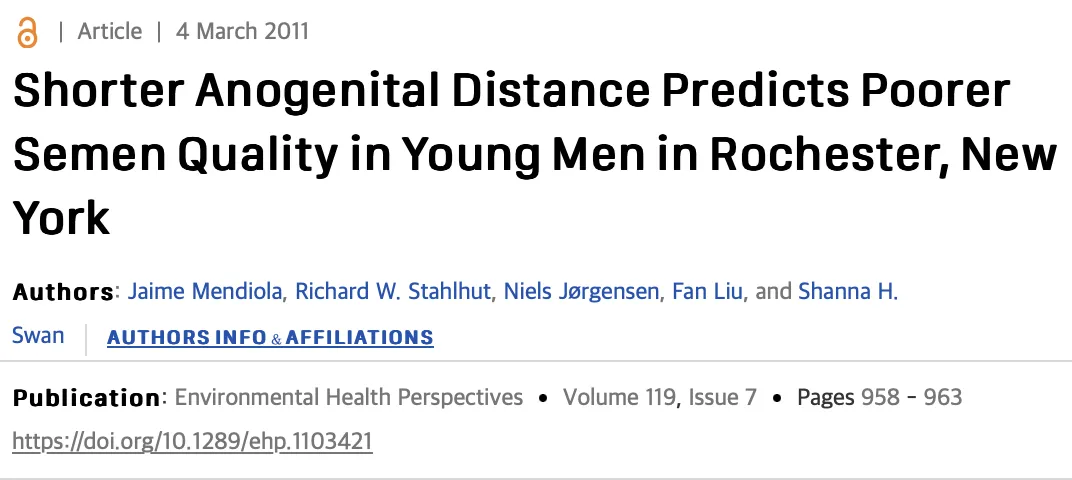
How Chemical Exposure in Pregnancy Affects Male Fertility
Did you know that a significant portion of male fertility is determined while still in the womb? Research suggests that a male fetus’s reproductive health is influenced by hormonal exposure during pregnancy, particularly testosterone levels between 8-14 weeks of gestation. One key indicator of male fertility—anogenital distance (AGD), the space between the genitals and rectum—has been linked to sperm count, with shorter AGD correlating to lower fertility.
So, what factors can interfere with AGD development and ultimately impact male fertility? One major culprit: xenoestrogens—environmental chemicals that mimic estrogen and disrupt hormonal balance.
What Are Xenoestrogens and Where Are They Found?
Xenoestrogens are synthetic compounds that interfere with testosterone production and receptor function. These chemicals are pervasive in modern environments and come from various sources, including:
Plastics – Bisphenols (BPA, BPS) and phthalates are commonly found in food packaging and water bottles.
Personal Care Products – Parabens, oxybenzone (found in sunscreen), and triclosan (used in antibacterial soaps) can all disrupt hormones.
Synthetic Fragrances – Found in perfumes, candles, air fresheners, and even some cleaning products.
Pesticides – Chemicals like atrazine and glyphosate (commonly used in non-organic produce) act as endocrine disruptors.
Non-Stick Cookware – Perfluorinated compounds (PFCs) used in non-stick coatings have been linked to hormonal imbalances.
Heavy Metals – Lead, mercury, and cadmium exposure can impact reproductive health.
Birth Control Pills – Residual synthetic hormones in water and personal use can affect long-term testosterone production.
How Xenoestrogens Impact Fertility
Since AGD is set during early pregnancy, any disruption in testosterone levels during this critical period can have lasting effects on a male child’s reproductive health. Exposure to xenoestrogens during pregnancy may not only shorten AGD but also contribute to lower sperm counts, poor sperm motility, and other fertility issues later in life.
Some studies even suggest that taking birth control pills before conception could have lingering effects on male offspring. While this has not been definitively proven, the underlying mechanisms suggest a potential link, warranting a precautionary approach.
How to Reduce Xenoestrogen Exposure During Pregnancy
Protecting your baby’s future fertility starts with reducing exposure to endocrine disruptors. While eliminating all toxins is impossible, a few strategic changes can significantly reduce exposure:
Switch to Glass or Stainless Steel Containers – Avoid plastic food storage and water bottles.
Use Clean Personal Care Products – Choose products free from parabens, phthalates, and synthetic fragrances.
Eat Organic When Possible – Reduce pesticide exposure by opting for organic produce and grass-fed meat.
Filter Your Water – Install a high-quality water filter to reduce contaminants, including pharmaceutical residues.
Avoid Non-Stick Cookware – Use stainless steel, cast iron, or ceramic cookware instead.
Limit Synthetic Fragrance Use – Opt for essential oils and natural home scents.
Check Your Cleaning Products – Use non-toxic, eco-friendly cleaning solutions.
The Long-Term Impact on Generational Health
The choices made during pregnancy have long-term effects, influencing a child’s hormonal balance, reproductive health, and even chronic disease risk. While mainstream medical advice often overlooks these concerns, functional medicine practitioners are increasingly raising awareness about the importance of reducing toxic exposure during pregnancy.
By taking proactive steps to limit xenoestrogen exposure, you are not only protecting your child’s fertility but also promoting overall hormonal health for generations to come.

How Chemical Exposure in Pregnancy Affects Male Fertility
Did you know that a significant portion of male fertility is determined while still in the womb? Research suggests that a male fetus’s reproductive health is influenced by hormonal exposure during pregnancy, particularly testosterone levels between 8-14 weeks of gestation. One key indicator of male fertility—anogenital distance (AGD), the space between the genitals and rectum—has been linked to sperm count, with shorter AGD correlating to lower fertility.
So, what factors can interfere with AGD development and ultimately impact male fertility? One major culprit: xenoestrogens—environmental chemicals that mimic estrogen and disrupt hormonal balance.
What Are Xenoestrogens and Where Are They Found?
Xenoestrogens are synthetic compounds that interfere with testosterone production and receptor function. These chemicals are pervasive in modern environments and come from various sources, including:
Plastics – Bisphenols (BPA, BPS) and phthalates are commonly found in food packaging and water bottles.
Personal Care Products – Parabens, oxybenzone (found in sunscreen), and triclosan (used in antibacterial soaps) can all disrupt hormones.
Synthetic Fragrances – Found in perfumes, candles, air fresheners, and even some cleaning products.
Pesticides – Chemicals like atrazine and glyphosate (commonly used in non-organic produce) act as endocrine disruptors.
Non-Stick Cookware – Perfluorinated compounds (PFCs) used in non-stick coatings have been linked to hormonal imbalances.
Heavy Metals – Lead, mercury, and cadmium exposure can impact reproductive health.
Birth Control Pills – Residual synthetic hormones in water and personal use can affect long-term testosterone production.
How Xenoestrogens Impact Fertility
Since AGD is set during early pregnancy, any disruption in testosterone levels during this critical period can have lasting effects on a male child’s reproductive health. Exposure to xenoestrogens during pregnancy may not only shorten AGD but also contribute to lower sperm counts, poor sperm motility, and other fertility issues later in life.
Some studies even suggest that taking birth control pills before conception could have lingering effects on male offspring. While this has not been definitively proven, the underlying mechanisms suggest a potential link, warranting a precautionary approach.
How to Reduce Xenoestrogen Exposure During Pregnancy
Protecting your baby’s future fertility starts with reducing exposure to endocrine disruptors. While eliminating all toxins is impossible, a few strategic changes can significantly reduce exposure:
Switch to Glass or Stainless Steel Containers – Avoid plastic food storage and water bottles.
Use Clean Personal Care Products – Choose products free from parabens, phthalates, and synthetic fragrances.
Eat Organic When Possible – Reduce pesticide exposure by opting for organic produce and grass-fed meat.
Filter Your Water – Install a high-quality water filter to reduce contaminants, including pharmaceutical residues.
Avoid Non-Stick Cookware – Use stainless steel, cast iron, or ceramic cookware instead.
Limit Synthetic Fragrance Use – Opt for essential oils and natural home scents.
Check Your Cleaning Products – Use non-toxic, eco-friendly cleaning solutions.
The Long-Term Impact on Generational Health
The choices made during pregnancy have long-term effects, influencing a child’s hormonal balance, reproductive health, and even chronic disease risk. While mainstream medical advice often overlooks these concerns, functional medicine practitioners are increasingly raising awareness about the importance of reducing toxic exposure during pregnancy.
By taking proactive steps to limit xenoestrogen exposure, you are not only protecting your child’s fertility but also promoting overall hormonal health for generations to come.
Apply To Work With Jon
Ready to take action? I'm here for you.
Sign up for an un-awkward, no-cost, no-obligation discovery call.


